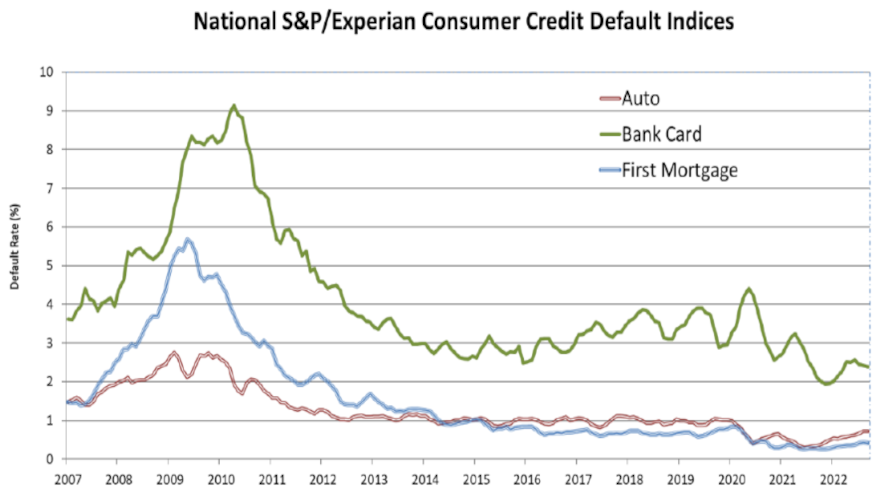Auto defaults hold steady in September

Chart courtesy of S&P Dow Jones Indices and Experian.
By subscribing, you agree to receive communications from Auto Remarketing and our partners in accordance with our Privacy Policy. We may share your information with select partners and sponsors who may contact you about their products and services. You may unsubscribe at any time.
For the first time in almost two years, auto defaults stayed at the same level for consecutive months.
On Tuesday, S&P Dow Jones Indices and Experian released data through September for the S&P/Experian Consumer Credit Default Indices, and the auto reading came in at 0.72%, which was the same as what analysts reported for August.
According to the S&P Dow Jones Indices and Experian, the last time auto defaults remained steady on a month-to-month basis was November and December 2020 when the readings were 0.64%.
Auto defaults remaining steady also comes after the rate made its largest jump so far this year in August.
Also remaining unchanged in the newest data was the composite rate, which represents a comprehensive measure of changes in consumer credit defaults. Analysts said the composite rate remained at 0.57%, as it’s been at that level for the past three months.
Keeping with the theme of the month, S&P Dow Jones Indices and Experian also reported that first mortgage default rates were unchanged, coming in at 0.42%.
Subscribe to Auto Remarketing to stay informed and stay ahead.
By subscribing, you agree to receive communications from Auto Remarketing and our partners in accordance with our Privacy Policy. We may share your information with select partners and sponsors who may contact you about their products and services. You may unsubscribe at any time.
Meanwhile, analysts pointed out that the bank card default rate fell 3 basis points in September to 2.38%.
Furthermore, S&P Dow Jones Indices and Experian discovered that all five major metropolitan areas posted lower default rates in September compared to previous month.
Analysts said Miami generated the largest decline, dropping 17 basis points to 0.99%.
Chicago was declined 9 basis points lower at 0.61%, and Los Angeles moved 7 basis points to 0.38%.
Dallas dropped 5 basis points to 0.64%, and New York dipped by 1 basis point to 0.57%.
Jointly developed by S&P Indices and Experian, analysts noted the S&P/Experian Consumer Credit Default Indices are published monthly with the intent to accurately track the default experience of consumer balances in four key loan categories: auto, bankcard, first mortgage lien and second mortgage lien.
The indices are calculated based on data extracted from Experian’s consumer credit database. This database is populated with individual consumer loan and payment data submitted by lenders to Experian every month.
Experian’s base of data contributors includes leading banks and mortgage companies and covers approximately $11 trillion in outstanding loans sourced from 11,500 lenders.


